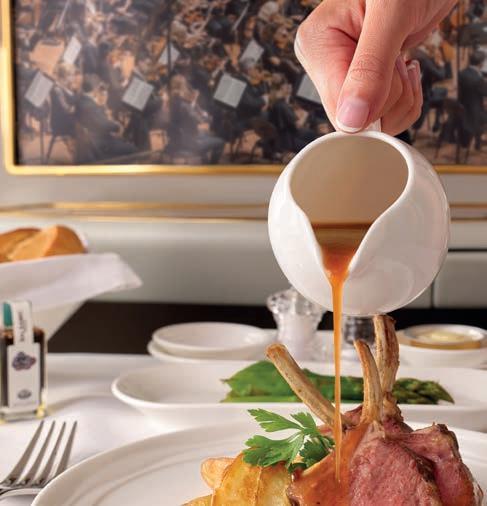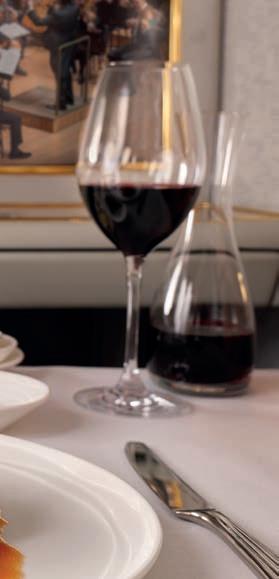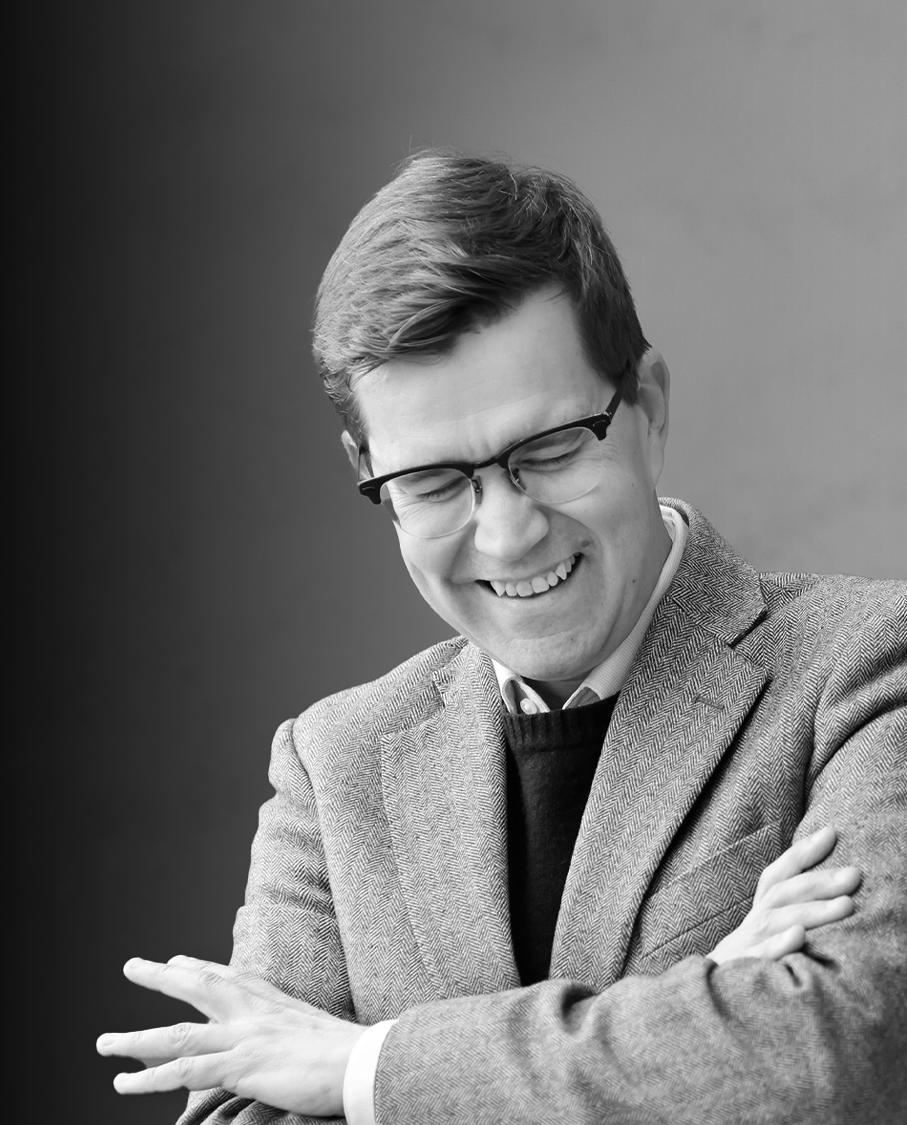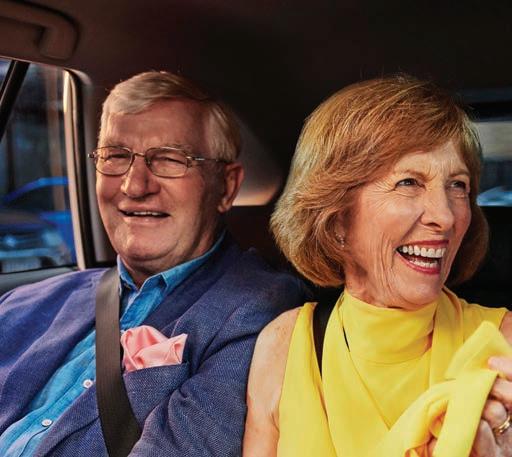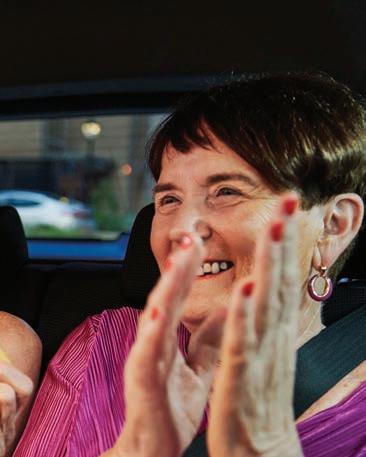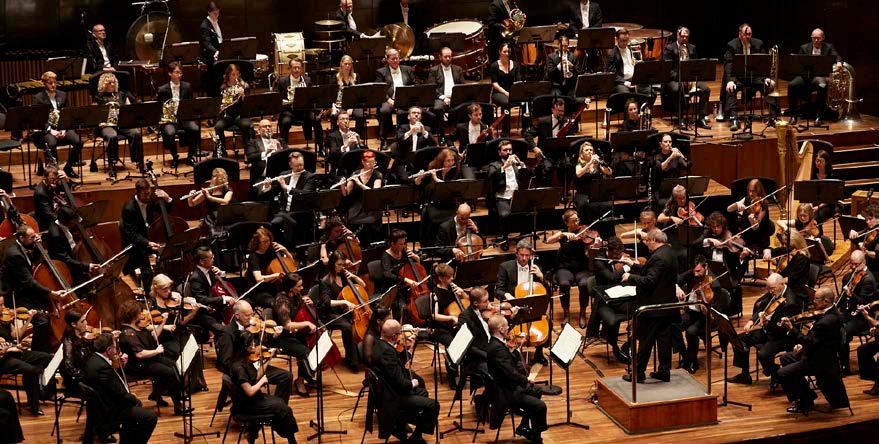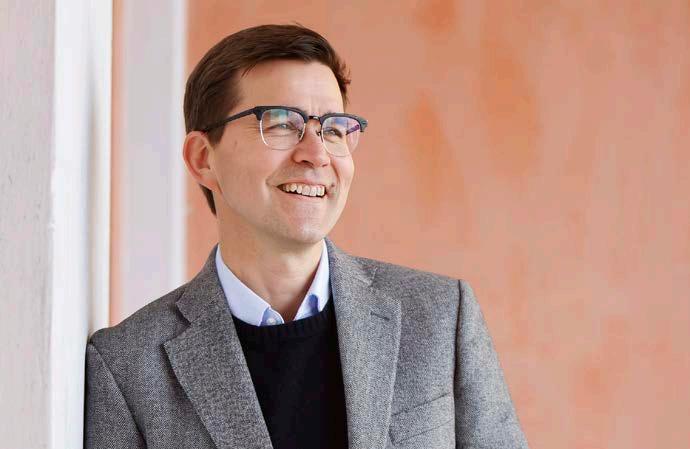PROGRAM NOTES
WOLFGANG AMADEUS MOZART
(1756–91)
Concert Rondo in D Major for Piano and Orchestra, K. 382
Wolfgang Amadeus Mozart wrote the Rondo in D major in 1782 as an alternate finale to his Piano Concerto No.5, K.175, which he had composed as a teenager almost a decade earlier. In the intervening years, he had quit his job at the Salzburg court (the Archbishop sent him off with “a kick on my arse,” as Mozart put it) and moved to Vienna to pursue a freelance career.
He was already known as the composer of the opera Idomeneo, and was at work on Die Entführung aus dem Serail, but he wanted opportunities in concert as well as in the theatre. So on March 3, 1782, he gave his first solo program in Vienna, which included the Piano Concerto No.5 (really his first mature concerto – the other four were juvenile arrangements). For this occasion, he wrote the new finale, perhaps thinking it was a more stylish fit for the Viennese audience, or perhaps simply thinking he could do better at age 26 than he had at 17. Today, the Piano Concert No.5 is usually performed with its original finale, and the Rondo is treated as a short standalone work for piano and orchestra.
To Mozart and his first listeners, it was a great success. Sending the score back to Salzburg later that March, he noted the Rondo made “such a furore in Vienna” and asked his father to “guard it like a jewel – and not give it to a soul to play…. I composed it specially for myself.” This initiated a period of piano-concerto writing; nearly every year through 1788, Mozart turned out between three to six more.
A Rondo is a common last-movement form, especially for concertos, in which a recurring main theme alternates with contrasting episodes. This piece, however, is really a Rondo in name only – coming closer to a variation form.
The orchestra presents the main theme, marked Allegretto grazioso (moderately fast, graceful), before the piano responds with a solo variation. The orchestra reprises the tune, and then joins with the piano for a rippling triplet variation, picking up to rapid demisemiquavers. A D-minor variation is dusky and expressive, before a return to D major decorates with trills. Then a tempo change – to a lilting Adagio that briefly drifts through minor again, followed by a quick Allegro and piano cadenza. Finally, the theme returns again (this time with pizzicato strings). It’s everything you could want from Mozart in its most concise form – classical poise and playful virtuosity draped over a sense of aspiration and longing.
© Benjamin Pesetsky 2024
MOZART
Piano Concerto No.23 in A, K488
I. Allegro
II. Adagio
III. Allegro assai
The key of A major is a wonderful thing in Mozart’s music. It is the key of the joyous, coming-of-age Symphony K201, the wise and transcendent Clarinet Concerto K622, and the key of this concerto, one of Mozart’s most alluring creations.
If we were to apply the words ‘pleasing’ and ‘agreeable’ to the first movement, Allegro, it would not be to suggest that the music is featureless and bland, but to highlight the skilful way in which the concerto captures the sound ideal of late 18th century music. It opens with a melody in the ‘singing style’; that is
MARVELLOUS MOZART | 7 March 10
to say, a gently flowing theme that, although played on instruments, is eminently singable. Mozart was without peer when it came to fashioning themes of this kind: pithy and melodious, varied yet beautifully balanced. For all of these reasons, it is memorable (which is just as well, given that it is the principal theme!). To really hammer the melody home, Mozart offers it twice at the beginning – strings alone in the first instance, winds in the second – and then delivers it a third time, albeit in slightly embellished form, when the piano soloist enters. This is a marvellous example of Mozart taking the listener by the hand and guiding them through the music. Listen up, he seems to be saying, this is the building block at the centre of our work. Other themes are heard in the first few minutes – the opening movement presents at least five clearly differentiated themes – all of which are kept in play as the movement unfolds. As for the piano writing, it is glittering and dextrous with featherlight runs up and down the keyboard in the transition passages. In a departure from convention, Mozart wrote out the first-movement cadenza in full rather than have the performer improvise it on the spot.
Mozart did something very bold in the second movement, Adagio, when he turned to the rarely used key of F sharp minor, the relative minor of A major. This ushers us into a sombre realm. The opening piano theme, one of Mozart’s most soulful, is in siciliana rhythm and conjures up a sorrowful mood with chromatic inflections, accented dissonances and shifts in register. The orchestra answers the opening melody with a poignant theme of its own. Mozart’s tasteful and discreet orchestration is exemplary, particularly his colouristic use of woodwind instruments. This concerto, which dates from 1786, was written towards the end of Mozart’s most concentrated
period of composing piano concertos and, as in the majority of his other so-called ‘Vienna piano concertos’, he liberates the winds from a background role, highlighting the entire section and individual instruments. Unusually, there are no oboes in this concerto. Instead, Mozart includes two clarinets, the wind instrument he prized above all others.
After the introspective middle movement, the finale, which is back in the key of A major, is unabashedly exuberant. Mozart juggles an astonishing variety of themes reminding us that, at a fundamental level, a concerto aims to dazzle and delight.
Robert Gibson © 2017
MOZART
Piano Concerto No.24 in C minor, K.491
I. Allegro
II. Larghetto
III. Allegretto
Mozart was so busy between October 1785 and April 1786 that he didn’t even have time to write letters home. Even by his own standards he got through a huge number of major works: a violin sonata, several pieces for the Masonic Lodge of which he was an active member, various ‘insert’ pieces for other operas, some works for wind ensembles, a ‘musical comedy’ Der Schauspieldirektor (The Impresario), three piano concertos and his epochal opera, The Marriage of Figaro. And he found the time to appear as conductor or soloist in at least seven concerts during those six months.
It is true, however, that this period marked the end, for a time at least, of Mozart’s prominence as a soloist. He gave his annual ‘academy’ – a concert where he would present his newest works – on 7 April in Vienna’s Burgtheater, featuring the C minor concerto, but, unusually for him, did not
MARVELLOUS MOZART | 7 March 11
plan a series of subscription concerts for the season of Lent as he had in previous years. Mozart’s withdrawal from concerto performance inevitably spawned a number of more or less fanciful theories in the decades which followed, especially given the nature of the C minor concerto: one is the old myth about his falling from favour with the Viennese public – the concerto’s uncompromising nature was supposedly not to Viennese taste. Another, more curious, is the notion that Mozart’s hands were damaged: it was said, by Karl Beethoven for one, that Mozart’s fingers were so bent from constant playing that he was unable to use a knife at table. It is true that bouts of rheumatic fever, from which Mozart suffered on several occasions, can cause arthritis, but as Mozart biographer Maynard Solomon points out, the ‘fine calligraphy’ of Mozart’s scores, not to mention his excellence at billiards, make this hard to believe.
Politically, things were a little strained in Vienna at the time. The Emperor Joseph II was determined to modernise his realm, curtailing the power of the church and nobility (for which reason he supported Mozart’s proposal to make Figaro into an opera), reforming the legal system, abolishing torture, offering a greater degree of liberty than his predecessor. Sadly he was inconsistent in his practice, and about the middle of the decade passed the Freemasonry Act in order to monitor the activities of its members. More disturbingly, in early 1786, the emperor intervened in a murder case with the result that the defendant was publicly and gruesomely executed over a four hour period. As German scholar Volkmar Braunbehrens points out, this all took place a few hundred yards from Mozart’s home, and the composer, about to spend two weeks writing this concerto, can hardly have been unaware of the 30,000-strong crowd in the streets below.
To what extent might all this bear on the music? It is unique in Mozart’s output in several ways: it uses a large orchestra for a vast range of effects; it avoids virtuosic display for its own sake; its first movement is in triple time (itself unusual); the opening theme, characterised by downward steps followed by wide upward leaps, is broken into progressively smaller units by short, gasping silences. The turbulence this creates prefigures Beethoven (who declared he could never surpass this piece), and has led commentators ever since to describe the piece as ‘tragic’ or ‘demonic’. Solomon has noted that in the slow movement of this, as in other works of this time, Mozart summons up ‘every gradation of emotion – from terror to vague feelings of unease, from unbearable intense pleasures bordering on ecstasy to a floating placidity and contentment’. And again, in the finale Mozart uses a form beloved of Beethoven and puts his theme through a set of eight variations, exploring a wide range of emotional worlds in the process.
The other factor in the equation is Figaro, of whose importance (both musically and politically) Mozart was well aware. Whether the turmoil and glimpses of beatific peace in this work are the result of Mozart’s response to his circumstances and the times will remain an open question. We can however point out that this work issues from the composer who was in the process of revolutionising the way in which human emotions and relationships could be depicted in music.
Gordon Kerry © 2002
MARVELLOUS MOZART | 7 March 12
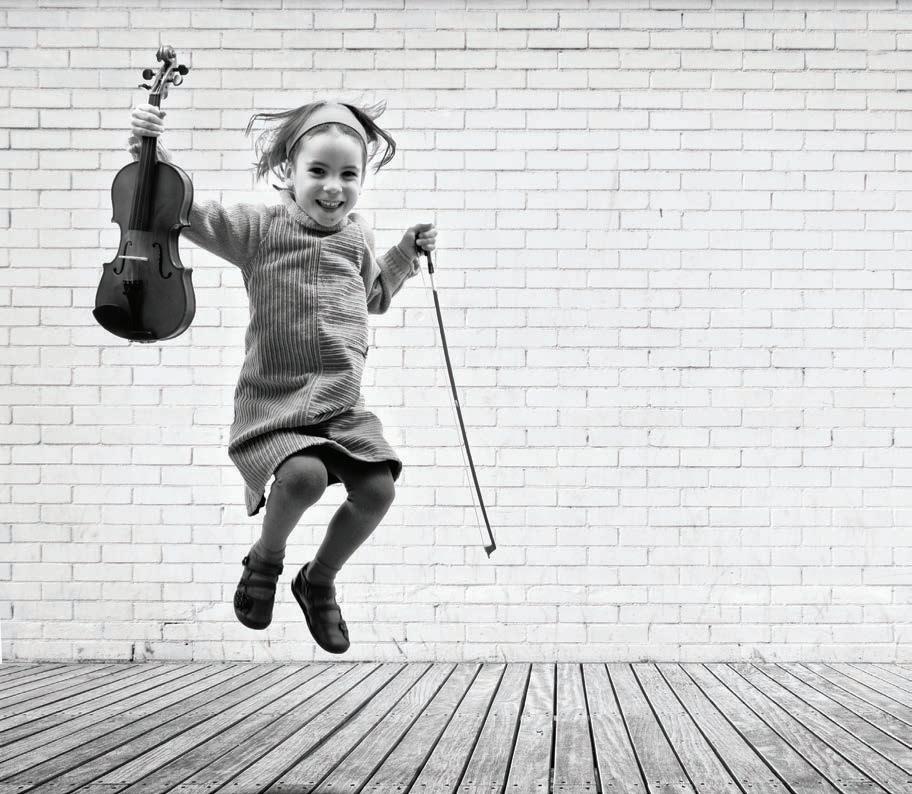
Bespoke trustee services for people invested in their legacy. For your family. For your community. For our future. www.eqt.com.au/future EQT Holdings Limited ABN 22 607 797 615 EVERY GENERATION LEAVES A LEGACY FOR THE NEXT. WHAT’S YOURS?
SUPPORTERS
MSO PATRON
Her Excellency Professor, the Honourable
Margaret Gardner AC, Governor of Victoria
CHAIRMAN’S CIRCLE
The Gandel Foundation
The Gross Foundation
Di Jameson OAM and Frank Mercurio
Harold Mitchell Foundation
Lady Primrose Potter AC CMRI
Cybec Foundation
The Pratt Foundation
The Ullmer Family Foundation
Anonymous (1)
ARTIST CHAIR BENEFACTORS
Concertmaster Chair
David Li AM and Angela Li
Cybec Assistant Conductor Chair
Leonard Weiss Cybec Foundation
Assistant Concertmaster
Tair Khisambeev
Di Jameson OAM and Frank Mercurio
Cybec Young Composer in Residence
Naomi Dodd
Cybec Foundation
PROGRAM BENEFACTORS
MSO Now & Forever Fund: International Engagement Gandel Foundation
Cybec 21st Century Australian Composers Program Cybec Foundation
Digital Transformation Perpetual Foundation – Alan (AGL) Shaw
Endowment
First Nations Emerging Artist Program
The Ullmer Family Foundation
East meets West The Li Family Trust, National Foundation for Australia-China Relations
Ears Wide Open and Music & Ideas
City of Melbourne, Crown Resorts Foundation and Packer Family Foundation.
MSO Live Online Crown Resorts Foundation, Packer Family Foundation
MSO Education Anonymous
MSO Academy Di Jameson OAM and Frank Mercurio, Mary Armour, Christopher Robinson in memory of Joan P Robinson
MSO For Schools Crown Resorts Foundation, Packer Family Foundation Jams in Schools Department of Education, Victoria, through the Strategic Partnerships Program, Marian and E.H. Flack Trust, Flora & Frank Leith Charitable Trust, Hume City Council
MSO Regional Touring Angior Foundation, Creative Victoria, Freemasons Foundation
Victoria, Robert Salzer Foundation, The Sir Andrew & Lady Fairley Foundation
Sidney Myer Free Concerts Sidney Myer
MSO Trust Fund and the University of Melbourne, City of Melbourne Event Partnerships Program
PLATINUM PATRONS $100,000+
The late Marc Besen AC and the late Eva Besen AO
The Gandel Foundation
The Gross Foundation
Di Jameson OAM and Frank Mercurio
David Li AM and Angela Li
Lady Primrose Potter AC CMRI
Anonymous (1)
VIRTUOSO PATRONS $50,000+
Dr Harry Imber
Margaret Jackson AC
Packer Family Foundation
Ullmer Family Foundation
Weis Family
Anonymous (1)
IMPRESARIO PATRONS $20,000+
The Aranday Foundation
H Bentley
The Hogan Family Foundation
David Krasnostein AM and Pat Stragalinos
Elizabeth Proust AO and Brian Lawrence
Lady Marigold Southey AC
14 Supporters
Kim Williams AM
The Yulgilbar Foundation
Anonymous (2)
MAESTRO PATRONS $10,000+
Christine and Mark Armour
Margaret Billson and the late Ted Billson
Shane Buggle and Rosie Callanan
Krystyna Campbell-Pretty AM
Andrew Dudgeon AM
Jaan Enden
Dr Mary-Jane H Gething AO
David R Lloyd
Peter Lovell
Maestro Jaime Martín
Rosemary and the late Douglas Meagher
Farrel and Wendy Meltzer
Nereda Hanlon and Michael Hanlon AM
Paul Noonan
Opalgate Foundation
Ian and Jeannie Paterson
Christopher Robinson and the late Joan P Robinson
Yashian Schauble
Glenn Sedgwick
The Sun Foundation
Gai and David Taylor
Athalie Williams and Tim Danielson
Lyn Williams AM
The Wingate Group
Anonymous (3)
PRINCIPAL PATRONS $5,000+
Mary Armour
John and Lorraine Bates
Barbara Bell in memory of Elsa Bell
Bodhi Education Fund
Julia and Jim Breen
Jannie Brown
Lynne Burgess
John Coppock OAM and Lyn Coppock
Perri Cutten and Jo Daniell
Ann Darby in memory of Leslie J. Darby
Mary Davidson and the late Frederick Davidson AM
The Dimmick Charitable Trust
Tim and Lyn Edward Equity Trustees
Bill Fleming
Dr John and Diana Frew
Sophie Galaise and Clarence Fraser
Carrillo Gantner AC and Ziyin Gantner
Dr Rhyl Wade and Dr Clem Gruen
Cecilie Hall and the late Hon Michael Watt KC
Louis J Hamon OAM
Merv Keehn and Sue Harlow
David Horowicz
Dr Alastair Jackson AM
Suzanne Kirkham
The late Dr Elizabeth Lewis AM
Lucas Family Foundation
Dr Jane Mackenzie
Gary McPherson
The Mercer Family Foundation
Anne Neil in memory of Murray A. Neil
Newton Family in memory of Rae Rothfield
Ken Ong OAM
Bruce Parncutt AO
David Ponsford
Professor Sam Ricketson AM and Dr Rosemary Ayton
Andrew and Judy Rogers
The Rosemary Norman Foundation
Guy Ross
Helen Silver AO and Harrison Young
Brian Snape AM
Dr Michael Soon
Mary Waldron
Janet Whiting AM
Dawna Wright and Peter Riedel
Igor Zambelli
Anonymous (1)
ASSOCIATE PATRONS $2,500+
Carolyn Baker
Marlyn Bancroft and Peter Bancroft OAM
Sascha O Becker
Janet H Bell
Alan and Dr Jennifer Breschkin
Patricia Brockman
15 Supporters
Nigel and Sheena Broughton
Dr Lynda Campbell
Oliver Carton
Janet Chauvel and the late Dr Richard Chauvel
Kaye Cleary
Michael Davies and Drina Staples
Leo de Lange
Sophie E Dougall in memory of Libby Harold
Barry Fradkin OAM and Dr Pam Fradkin
Kim and Robert Gearon
Janette Gill
R Goldberg and Family
Goldschlager Family Charitable Foundation
Colin Golvan AM KC and Dr Deborah Golvan
Jennifer Gorog
C M Gray
Marshall Grosby and Margie Bromilow
Ian Kennedy AM & Dr Sandra Hacker AO
Susan and Gary Hearst
Dr Keith Higgins and Dr Jane Joshi
Hartmut and Ruth Hofmann
Doug Hooley
Gillian Hund OAM and Michael Hund
Geoff and Denise Illing
Paul and Amy Jasper
Sandy Jenkins
John Jones
Ann Lahore
Qian Li
Carolynne Marks
Margaret and John Mason OAM
H E McKenzie
Dr Isabel McLean
Christopher Menz and Peter Rose
Ian Merrylees
Suzie and Edgar Myer
Dr Paul Nisselle AM
Alan and Dorothy Pattison
Ruth and Ralph Renard
Peter and Carolyn Rendit
James Ring
Tom and Elizabeth Romanowski
Liliane Rusek and Alexander Ushakoff
The Sage Foundation
Jeffrey Sher KC and Diana Sher OAM
Barry Spanger
Steinicke Family
Caroline Stuart
Robert and Diana Wilson
Shirley and Jeffrey Zajac
Anonymous (3)
PLAYER PATRONS $1,000+
Dr Sally Adams
Helena Anderson
Margaret Astbury
Robbie Barker
Michael Bowles & Alma Gill
Allen and Kathryn Bloom
Joyce Bown
Youth Music Foundation
Professor Ian Brighthope
Miranda Brockman
Drs John D L Brookes and Lucy V Hanlon
Stuart Brown
Suzie Brown OAM and the late Harvey Brown
Jill and Christopher Buckley
Dr Robin Burns and Dr Roger Douglas
Ronald and Kate Burnstein
Peter A Caldwell
Breen Creighton and Elsbeth Hadenfeldt
Mrs Nola Daley
Panch Das and Laurel Young-Das
Caroline Davies
Natasha Davies, for the Trikojus Education Fund
Rick and Sue Deering
John and Anne Duncan
Jane Edmanson OAM
Diane Fisher
Alex Forrest
Grant Fisher and Helen Bird
Chris Freelance
Applebay Pty Ltd
David Frenkiel and Esther Frenkiel OAM
Mary Gaidzkar
Simon Gaites
16 Supporters
Anthony Garvey and Estelle O’Callaghan
David I Gibbs AM and Susie O’Neill
Sonia Gilderdale
Dr Celia Godfrey
Dr Marged Goode
Hilary Hall in memory of Wilma Collie
David Hardy
Tilda and the late Brian Haughney
Cathy Henry
Dr Jennifer Henry
Rod Home
Lorraine Hook
Jenny and Peter Hordern
Katherine Horwood
Penelope Hughes
Geoff and Denise Illing
Jordan Janssen
Shyama Jayaswal
Basil and Rita Jenkins
Emma Johnson
Wendy Johnson
Sue Johnston
John Kaufman
Angela Kayser
Drs Bruce and Natalie Kellett
Dr Anne Kennedy
Akira Kikkawa
Dr Judith Kinnear
Dr Richard Knafelc and Mr Grevis Beard
Tim Knaggs
Dr Jerry Koliha and Marlene Krelle
Jane Kunstler
Kerry Landman
Kathleen and Coran Lang
Bryan Lawrence
Lesley McMullin Foundation
Dr Jenny Lewis
Phil Lewis
Dr Kin Liu
Andrew Lockwood
Elizabeth H Loftus
Chris and Anna Long
John MacLeod
Marshall Segan in memory of Berek Segan
OBE and Marysia Segan
Ian McDonald
Wayne McDonald and Kay Schroer
Lois McKay
Dr Eric Meadows
Professor Geoffrey Metz
Sylvia Miller
Ian Morrey and Geoffrey Minter
Dr Anthony and Dr Anna Morton
Anthony and Karen Ho
Dr Judith S Nimmo
Laurence O’Keefe and Christopher James
Susan Pelka
Ian Penboss
Peter Priest
John Prokupets
Professor Charles Qin OAM and Kate Ritchie
Eli Raskin
Jan and Keith Richards
Roger Parker and Ruth Parker
Dr Peter Rogers and Cathy Rogers OAM
Dr Ronald and Elizabeth Rosanove
Marie Rowland
Viorica Samson
P Shore
Janet and Alex Starr
Dr Peter Strickland
Dr Joel Symons and Liora Symons
Russell Taylor and Tara Obeyesekere
Geoffrey Thomlinson
Frank Tisher OAM and Dr Miriam Tisher
Andrew and Penny Torok
Christina Turner
Leon and Sandra Velik
Edward & Paddy White
Nic and Ann Willcock
Lorraine Woolley
Dr Kelly and Dr Heathcote Wright
Anonymous (16)
OVERTURE PATRONS $500+
Jane Allan and Mark Redmond
Mario M Anders
Jenny Anderson
Dr Judith Armstrong and Robyn Dalziel
17 Supporters
Doris Au
Lyn Bailey
Mr Robin Batterham
Dr William Birch AM
Richard Bolitho
Dr Robert Brook
Elizabeth Brown
Roger and Coll Buckle
Daniel Bushaway
Jungpin Chen
Linda Clifton
Dr John Collins
Judith Cowden in memory of violinist
Margaret Cowden
Gregory Crew
Sue Cummings
Dr Oliver and Matilda Daly
Suzanne Dembo
Carol des Cognets
Margaret Flatman
Brian Florence
M C Friday
David and Geraldine Glenny
Louise Gourlay OAM
Christine Grenda
Dawn Hales
George Hampel AM KC and Felicity Hampel AM SC
John Hill
William Holder
Rod Home
Gillian Horwood
Noelle Howell and Judy Clezy
Rob Jackson
Irene Kearsey & Michael Ridley
Peter Kempen AM
John Keys
Lesley King
Professor David Knowles and Dr Anne McLachlan
Dr Kim Langfield-Smith
Pauline and David Lawton
Paschalina Leach
Kay Liu
David Loggia
Eleanor & Phillip Mancini
Joy Manners
Morris and Helen Margolis
Sandra Masel in memory of Leigh Masel
Janice Mayfield
Gail McKay
Shirley A McKenzie
Dr Alan Meads and Sandra Boon
Joan Mullumby
Adrian and Louise Nelson
Marian Neumann
Ed Newbigin
Valerie Newman
Amanda O’Brien
Brendan O’Donnell
Jillian Pappas
Phil Parker
Sarah Patterson
The Hon Chris Pearce and Andrea Pearce
Peter Berry and Amanda Quirk
William Ramirez
Geoffrey Ravenscroft
Dr Christopher Rees
Professor John Rickard
Michael Riordan and Geoffrey Bush
Fred and Patricia Russell
Carolyn Sanders
Dr Marc Saunders
Dr Nora Scheinkestel
Julia Schlapp
Hon Jim Short and Jan Rothwell Short
Madeline Soloveychik
Tom Sykes
Allison Taylor
Reverend Angela Thomas
Mely Tjandra
Chris and Helen Trueman
Rosemary Warnock
Amanda Watson
Michael Whishaw
Deborah and Dr Kevin Whithear OAM
Charles and Jill Wright
Anonymous (14)
MSO GUARDIANS
Jenny Anderson
David Angelovich
18 Supporters
G C Bawden and L de Kievit
Lesley Bawden
Joyce Bown
Patricia A Breslin
Mrs Jenny Bruckner and the late Mr John Bruckner
The late Ken Bullen
Peter A Caldwell
Luci and Ron Chambers
Beryl Dean
Sandra Dent
Alan Egan JP
Gunta Eglite
Marguerite Garnon-Williams
Drs L C Gruen and R W Wade
Louis J Hamon AOM
Charles Hardman
Carol Hay
Jennifer Henry
Graham Hogarth
Rod Home
Lyndon Horsburgh
Tony Howe
Lindsay and Michael Jacombs
Laurence O’Keefe and Christopher James
John Jones
Sylvia Lavelle
Pauline and David Lawton
Cameron Mowat
Ruth Muir
David Orr
Matthew O’Sullivan
Rosia Pasteur
Penny Rawlins
Anne Roussac-Hoyne and Neil Roussac
Michael Ryan and Wendy Mead
Andrew Serpell and Anne Kieni Serpell
Jennifer Shepherd
Suzette Sherazee
Dr Gabriela and Dr George Stephenson
Pamela Swansson
Lillian Tarry
Tam Vu and Dr Cherilyn Tillman
Mr and Mrs R P Trebilcock
Peter and the late Elisabeth Turner
Michael Ulmer AO
The Hon. Rosemary Varty
Terry Wills Cooke OAM and the late Marian Wills Cooke
Mark Young
Anonymous (20)
The MSO gratefully acknowledges the support of the following Estates:
Norma Ruth Atwell
Angela Beagley
Barbara Bobbe
Michael Francois Boyt
Christine Mary Bridgart
Margaret Anne Brien
Deidre and Malcolm Carkeek
The Cuming Bequest
Margaret Davies
Blair Doig Dixon
Neilma Gantner
Angela Felicity Glover
The Hon Dr Alan Goldberg AO QC
Derek John Grantham
Delina Victoria Schembri-Hardy
Enid Florence Hookey
Gwen Hunt
Family and Friends of James Jacoby
Audrey Jenkins
Joan Jones
Pauline Marie Johnston
Christine Mary Kellam
C P Kemp
Jennifer Selina Laurent
Sylvia Rose Lavelle
Peter Forbes MacLaren
Joan Winsome Maslen
Lorraine Maxine Meldrum
Prof Andrew McCredie
Jean Moore
Joan P Robinson
Maxwell and Jill Schultz
Miss Sheila Scotter AM MBE
Marion A I H M Spence
Molly Stephens
Gwennyth St John
Halinka Tarczynska-Fiddian
Jennifer May Teague
Elisabeth Turner
19 Supporters
Albert Henry Ullin
Jean Tweedie
Herta and Fred B Vogel
Dorothy Wood
Joyce Winsome Woodroffe
COMMISSIONING CIRCLE
Cecilie Hall and the Late Hon Michael Watt KC
Tim and Lyn Edward
Weis Family
FIRST NATIONS CIRCLE
John and Lorraine Bates
Colin Golvan AM KC and Dr Deborah Golvan
Sascha O. Becker
Maestro Jaime Martín
Elizabeth Proust AO and Brian Lawrence
Guy Ross
The Sage Foundation
The Kate and Stephen Shelmerdine Family Foundation
Michael Ullmer AO and Jenny Ullmer
Jason Yeap OAM – Mering Management Corporation
ADOPT A MUSICIAN
Shane Buggle and Rosie Callanan
Roger Young
Andrew Dudgeon AM
Rohan de Korte, Philippa West
Tim and Lyn Edward
John Arcaro
Dr John and Diana Frew
Rosie Turner
Sophie Galaise and Clarence Fraser
Stephen Newton
Dr Mary-Jane Gething AO
Monica Curro
The Gross Foundation
Matthew Tomkins
Dr Clem Gruen and Dr Rhyl Wade
Robert Cossom
Cecilie Hall and the late Hon Michael Watt KC
Saul Lewis
Nereda Hanlon and Michael Hanlon AM
Abbey Edlin
David Horowicz
Anne Marie Johnson
Dr Harry Imber
Sarah Curro, Jack Schiller
Margaret Jackson AC
Nicolas Fleury
Di Jameson OAM and Frank Mercurio
Elina Fashki, Benjamin Hanlon, Tair Khisambeev, Christopher Moore
The late Dr Elizabeth A Lewis AM
Anthony Chataway
David Li AM and Angela Li
Concermaster Chair
Rosemary and the late Douglas Meagher
Craig Hill
Gary McPherson
Rachel Shaw
Anne Neil
Eleanor Mancini
Newton Family
in memory of Rae Rothfield
Cong Gu
The Rosemary Norman Foundation
Ann Blackburn
Andrew and Judy Rogers
Michelle Wood
Glenn Sedgwick
Tiffany Cheng, Shane Hooton
Dr Martin Tymms and Patricia Nilsson
Natasha Thomas
Anonymous
Prudence Davis
Anonymous
Rachael Tobin
HONORARY APPOINTMENTS
Life Members
John Gandel AC and Pauline Gandel AC
Sir Elton John CBE
Lady Primrose Potter AC CMRI
Jeanne Pratt AC
Michael Ullmer AO and Jenny Ullmer
Anonymous
MSO Ambassador
Geoffrey Rush AC
20 Supporters
The MSO honours the memory of Life Members
Marc Besen AC
Mrs Eva Besen AO
John Brockman OAM
The Honourable Alan Goldberg AO QC
Harold Mitchell AC
Roger Riordan AM
Ila Vanrenen
MSO ARTISTIC FAMILY
Jaime Martín
Chief Conductor
Benjamin Northey
Principal Conductor in Residence
Leonard Weiss
Cybec Assistant Conductor
Sir Andrew Davis CBE
Conductor Laureate
Hiroyuki Iwaki †
Conductor Laureate (1974–2006)
Warren Trevelyan-Jones
MSO Chorus Director
Erin Helyard
Artist in Residence
Karen Kyriakou
Artist in residence, Learning and Engagement
Christian Li
Young Artist in Association
Katy Abbott
Composer in Residence
Naomi Dodd
Cybec Young Composer in Residence
Deborah Cheetham Fraillon AO
First Nations Creative Chair
Dr Anita Collins
Learning and Engagement Creative Chair
Xian Zhang
East meets West Ambassador
Artistic Ambassadors
Tan Dun
Lu Siqing
MSO BOARD Chairman
David Li AM
Co-Deputy Chairs
Margaret Jackson AC
Di Jameson OAM
Managing Director
Sophie Galaise Board Directors
Shane Buggle
Andrew Dudgeon AM
Martin Foley
Lorraine Hook
Gary McPherson
Farrel Meltzer
Edgar Myer
Glenn Sedgwick
Mary Waldron
Company Secretary
Demetrio Zema
The MSO relies on your ongoing philanthropic support to sustain our artists, and support access, education, community engagement and more. We invite our supporters to get close to the MSO through a range of special events.
The MSO welcomes your support at any level. Donations of $2 and over are tax deductible, and supporters are recognised as follows:
$500+ (Overture)
$1,000+ (Player)
$2,500+ (Associate)
$5,000+ (Principal)
$10,000+ (Maestro)
$20,000+ (Impresario)
$50,000+ (Virtuoso)
$100,000+ (Platinum)
21 Supporters

MAJOR



Thank you to our Partners
PARTNERS
PARTNER
PARTNERS INTERNATIONAL LAW FIRM PARTNER VENUE PARTNER
GOVERNMENT
PRINCIPAL
SUPPORTING
PARTNERS
TRAINING PARTNER Quest Southbank Ernst & Young
PARTNERS
PARTNERS
ORCHESTRAL
PREMIER
EDUCATION
MEDIA AND BROADCAST PARTNERS

TRUSTS AND FOUNDATIONS


Freemasons Foundation Victoria
The Sir Andrew and Lady Fairley Foundation, The Angior Family Foundation, Flora & Frank Leith Trust, Perpetual Foundation – Alan (AGL) Shaw Endowment, Sidney Myer MSO Trust Fund

